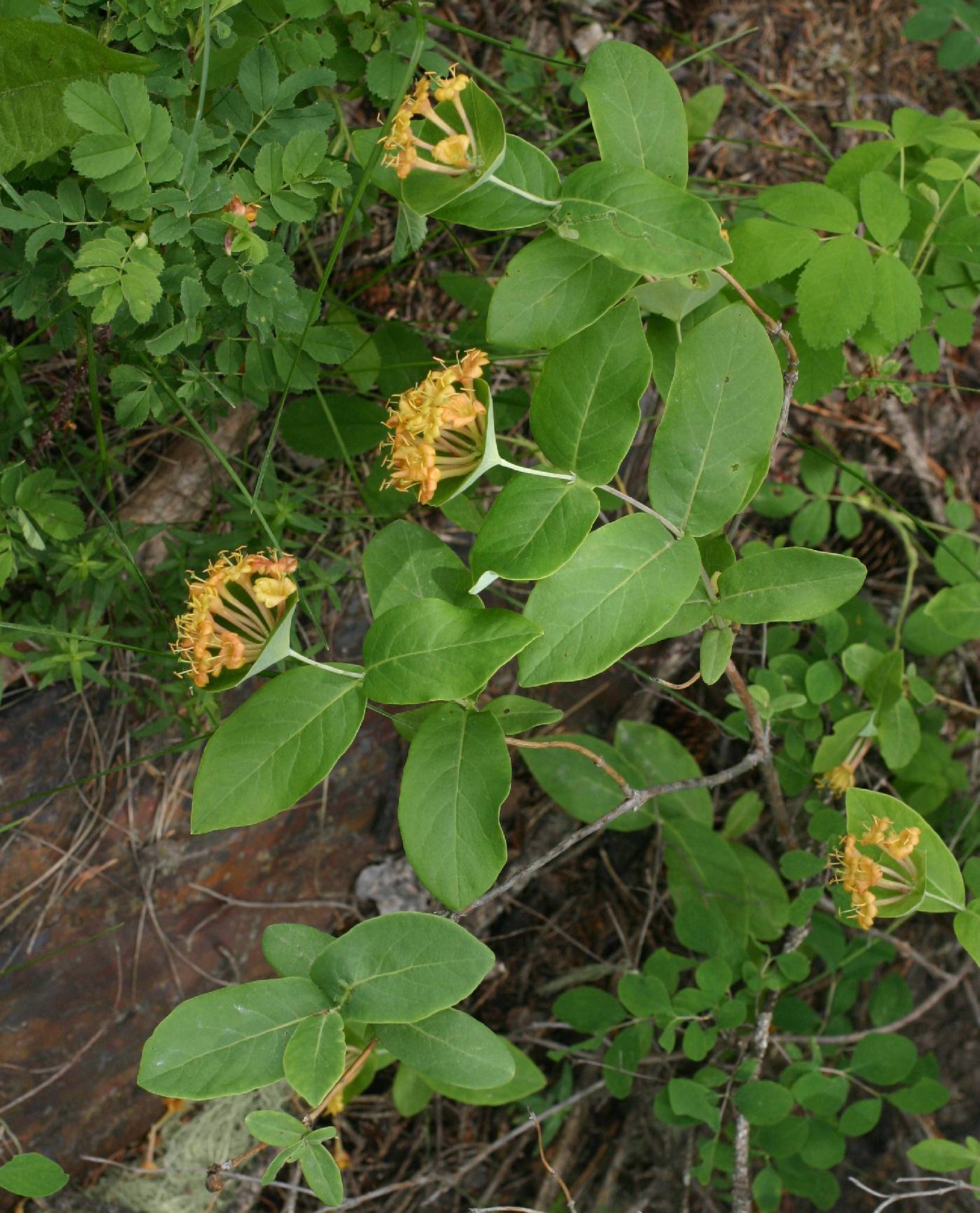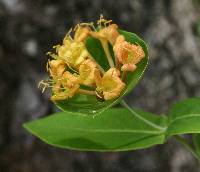Climbing shrub
Leaves: opposite, short-stalked or almost stalkless, 5 - 12 cm long, elliptic to oblong (but variable in shape) with pointed tip, with a waxy coating (glaucous) beneath. The uppermost one or two pairs of leaves are fused into a diamond-shaped or doubly egg-shaped disk.
Flowers: borne in stalkless or short-stalked clusters (spikes) at branch tips. Calyx short, five-toothed. Corolla strongly two-lipped, pale yellowish, tinged with purple, 1.5 - 2.5 cm long, tubular to funnel-shaped, five-lobed, hairy inside. Corolla tube about equaling lips. Stamens five, exserted.
Fruit: a few-seeded berry, in clusters, red.
Twigs: hairless.
Similar species: Lonicera x heckrottii and L. sempervirens are similar but their corollas grow over 3 cm long. Lonicera prolifera differs by having yellowish flowers and glaucous upper leaves with rounded, not pointed, tips.
Flowering: May to late June
Habitat and ecology: Occasional in woods, typically calcareous springy woods.
Occurence in the Chicago region: native
Etymology: Lonicera is named after Adam Lonicer (1528-1586), a German botanist and author. Dioica refers to dioecious, which means "male and female flowers on separate plants."
Author: The Morton Arboretum


